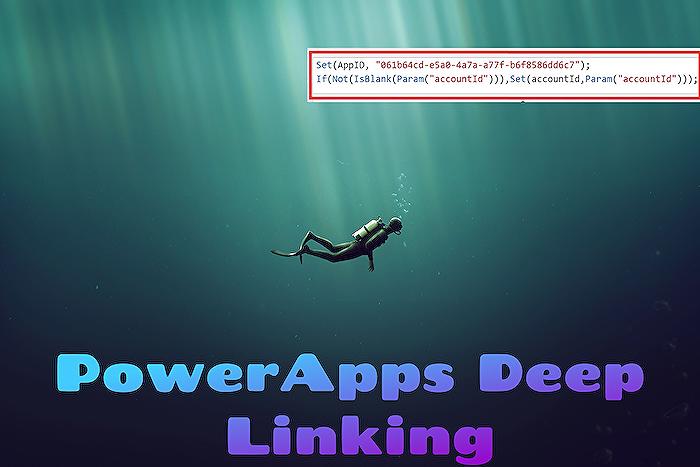
The Ultimate Guide to Power Apps Deep Linking
SharePoint & PowerApps MVP - SharePoint, O365, Flow, Power Apps consulting & Training
Unlock the secrets of Power Apps deep linking with our ultimate guide, covering all from URL creation to PowerBI integration for Microsoft experts.
Exploring Power Apps Deep Linking
In this YouTube video shared by Shane Young [MVP], viewers are given a comprehensive guide on using Power Apps Deep Linking, with a particular focus on Dataverse. He explains how one can share a direct link to a specific record in a Power Apps application.
Young dives into the mechanics of creating URLs that can be shared through multiple mediums and explains how to identify the primary key in Dataverse, an essential step in crafting the direct link. The video also discusses the use of the OnStart property in Power Apps to navigate users to specific screens through these directly linked URLs.
A noteworthy part of the content illustrates how to dodge common pitfalls and successful integrations with Power Automate and PowerBI. Young uses the opportunity to make his viewers understand how to become proficient 'wizard' of Power Apps deep linking.
Key Takeaways from the Video Guide
- Understand the process of app creation using the Accounts table in Microsoft Dataverse.
- Learn how to update navigation and set context for user navigation to other screens.
- Focus on the process of getting the unique App ID for your app and enabling deep link to a screen.
- Discover how to create the deep link URL and invoke the app with the parameter value.
- A section about sending the deep link in an email and sharing account information is also discussed in the video.
- Test your app and navigate to the account details screen directly.
You can learn more about Power Apps at the following link.
Brief Overview of Power Apps
Power Apps offers an innovative approach to building business focused apps without the needs of writing any code. Users can design their app by leveraging the Power Apps studio and the range of available templates. The aim of Power Apps is to democratize the app development process by empowering the users to build their custom applications adept in addressing specific business functions.

Learn about The Ultimate Guide to Power Apps Deep Linking
From the text provided, we can glean that it details instructions on how to effectively use Power Apps; specifically, it teaches users how to use deep linking in their Power Apps applications. Deep linking is a potent mechanism that enables users to transmit a link that opens a specific record directly within a Power Apps application. Power Apps, a Microsoft product, allows users to create and utilize applications that connect to your existing data and systems.
Custom apps can be built swiftly with Power Apps - requiring less technical knowledge than traditional app development - thanks to the user-friendly, drag-and-drop feature. These apps can be shared organisation-wide, boosting efficiency and transparency. The key areas covered in the text include creating the app, updating navigation, retrieving the App ID, enabling deep link to a screen, generating the deep link URL, and sending a deep link in an email.
Despite the substantial insights provided, you may want to delve deeper and learn more about Power Apps, deep linking, and other relevant subjects. Therefore, a few recommended courses include:
- Microsoft Power Apps Essential Training: The Basics
- Power Apps + Dynamics 365 Solution Architect Expert
- Advanced Power Apps: Mastering Formulas and Functions
- Microsoft Power Automate: Beyond the Basics
- Microsoft Power Automate: Creating Business Workflows
These courses provide a comprehensive understanding of Power Apps' fundamental concepts and deep linking. They also impart knowledge on advanced topics like formulating and working with business workflows using Power Automate. After completion, you should be able to develop sophisticated apps using Power Apps, integrate these apps smoothly into various workflows, and even aim for a Power Apps + Dynamics 365 Solution Architect Expert certification.
Remember, the consistent application of what you learn is the key to truly mastering these Microsoft tools. By designing your applications and utilizing deep linking, you will be able to reinforce the course concepts while gaining an in-depth understanding of how deep linking can be applied effectively to other situations. It's a journey of discovery which renders you more skilled at utilising Power Apps and related Microsoft services.
One last piece of advice: consider following some blogs and forums dedicated to Power Apps. This will keep you abreast of new features, best practices, and professional insights. Microsoft’s own Power Apps community is a valuable resource brimming with tutorials, sample apps, and a very active forum. Scott Durow's blog is likewise an excellent resource as he's a well-respected figure in the Power Apps world.
Keywords
Power Apps Deep Linking Guide, Ultimate Power Apps Tutorial, Deep Linking in Power Apps, Power Apps Advanced Guide, Power Apps Techniques, Master Power Apps, Deep Linking Techniques, Power Apps Optimization, Advanced Deep Linking, Power Apps Strategy.